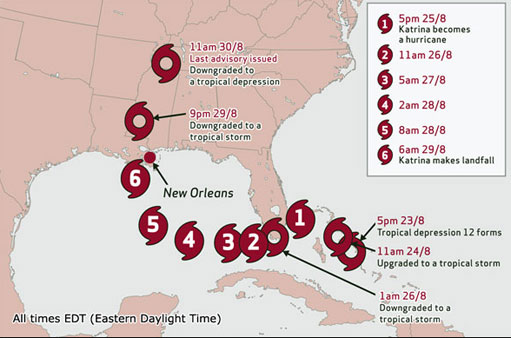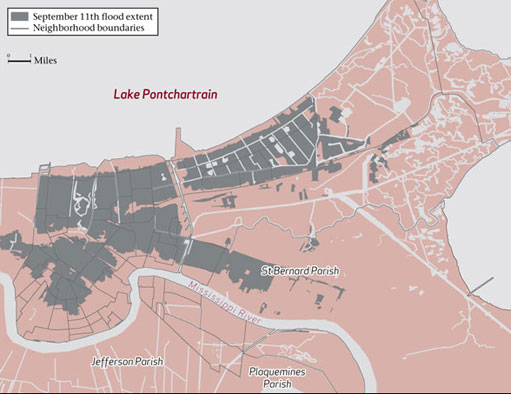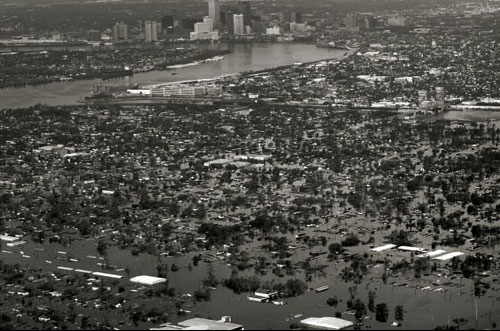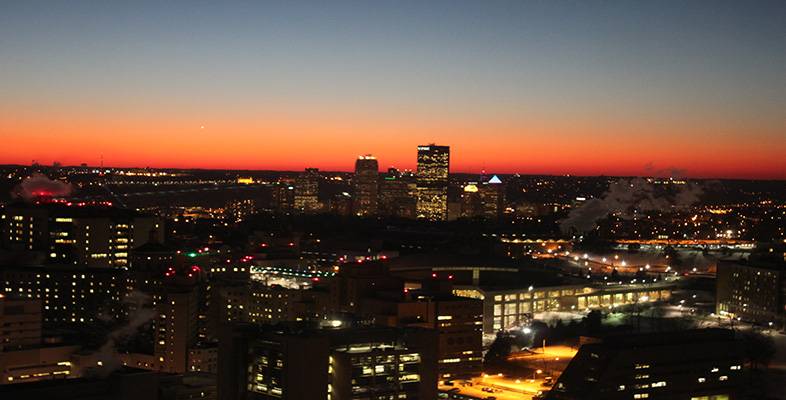2 New Orleans and Hurricane Katrina: ‘shaming America’?
2.1 The shaming of America
I begin our story with a case study relating to one of the most momentous episodes of environmental catastrophe in the early 2000s, Hurricane Katrina. On 29 August 2005, Katrina, a category 5 hurricane with 290 kph winds, hit the Gulf of Mexico coast of the southern USA, bearing down on the state of Louisiana and in particular on its main city, New Orleans (Figure 1). With much of ‘the Big Easy’, as the city is popularly known in the USA, below sea level, New Orleans was protected from the sea, a surrounding lake and the Mississippi River by a ring of natural and human-made barriers called levees. However, Katrina was the long-awaited and feared ‘Big One’, a powerful storm with the potential to overwhelm the levees.

When the storm struck, a number of critically important levees gave way and, in scenes that were soon to be broadcast around the world, more than 80 per cent of New Orleans was inundated with several feet of toxic floodwater (Figure 2). The majority of the population of 1.3 million in the greater New Orleans area had already been evacuated in what was the largest forced migration in recent US history, but those remaining, primarily in areas home to predominantly black and working-class people and with large numbers of elderly people and children, were quickly engulfed by the floodwater. At the time of writing (2008), at least 1000 people are known to have died, while the final death figure may never be known. The estimated costs of damage range from US$100bn to US$200bn (Gotham, 2007, p. 81).

Katrina's impact on New Orleans was one of the most televised disasters in recent history, generating twenty-four-hour news coverage around the world and considerable political debate. The response to the disaster by the US Federal Government in Washington DC and organisations such as the Federal Emergency Management Agency (FEMA) was criticised for being insufficiently quick and effective. In the ensuing controversies in the aftermath of Katrina, however, the government was not the only target of critics. Hurricane Katrina was widely perceived as the largest ‘natural’ disaster to occur in continental USA. However, for many observers this was no natural disaster but an unprecedented social disaster. Highlighting reports of looting, rape, murder and street violence, some conservative commentators claimed that social organisation broke down into some kind of ‘anarchy’. These accounts were often repeated uncritically on the television, accompanied by sensationalised and selective film coverage. Such stories and images, together with political indifference and initial government failure to respond to the disaster, amounted to what The Economist termed ‘The shaming of America’ (The Economist, 10 September 2005, p. 11).

